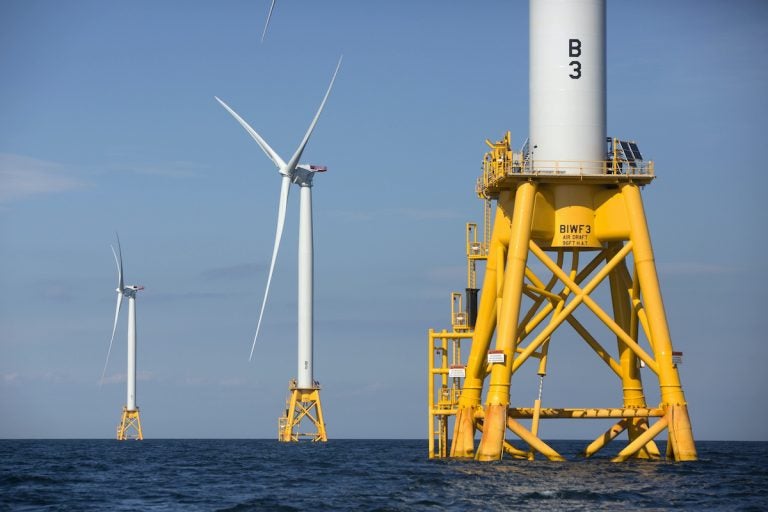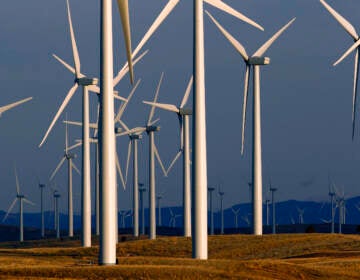Renewables overtake coal, but natural gas still dominates as the nation’s power generator
Wind, hydroelectric, solar, biomass, and geothermal sources combined in 2020 to inch out coal and nuclear power for the first time.

File photo: Three of Deepwater Wind's five turbines stand in the water off Block Island, R.I, the nation's first offshore wind farm. (AP Photo/Michael Dwyer, File)
Renewable energy has inched above both coal and nuclear power for the first time, to become the second-highest source of electricity in the United States behind natural gas. Figures released this week by the federal Energy Information Administration show wind, hydroelectric, solar, biomass and geothermal combined accounted for 834 billion kilowatt-hours, or about 21% of all generation in 2020. Natural gas still leads as the nation’s top source of electricity, generating 1,617 kWh last year, or about 40% of U.S. power generation.
The shift stems from an increase in renewable sources, but also a steep decline in coal usage, which dropped 20% from 2019.
Wind remains the dominant source of renewable energy in the U.S., and grew 14% in 2020. President Joe Biden has set a goal of 30,000 additional megawatts of offshore wind by 2030. New Jersey has an ambitious plan to become the East Coast’s hub for wind power distribution, and Gov. Phil Murphy set his own goal of 100% renewable energy by 2050.
The recent bipartisan infrastructure deal hashed out by the White House included $73 billion for renewable transmission. A large stumbling block for renewables is getting the power from the point of generation to areas of greatest consumption.
The money would create a “Grid Deployment Authority,” to oversee research and development for resilient transmission systems. The White House says it would also fund “thousands of miles of new, resilient transmission lines,” as well as new nuclear reactors, carbon capture, and clean hydrogen technologies.
Coal has been on the decline since 2007, much of it replaced by cheaper natural gas. But the Energy Information Agency says it expects coal-fired electricity to bounce back in 2021 by as much as 18% as gas prices rise.
The agency reports renewables will continue to climb, predicting a 7% increase in 2021.
Nuclear power declined 2% and is expected to continue to decrease as plants such as New Jersey’s Oyster Creek plant retire. The state recently approved a subsidy to keep its other nuclear plants afloat, including Salem and Hope Creek.

Get daily updates from WHYY News!
WHYY is your source for fact-based, in-depth journalism and information. As a nonprofit organization, we rely on financial support from readers like you. Please give today.







